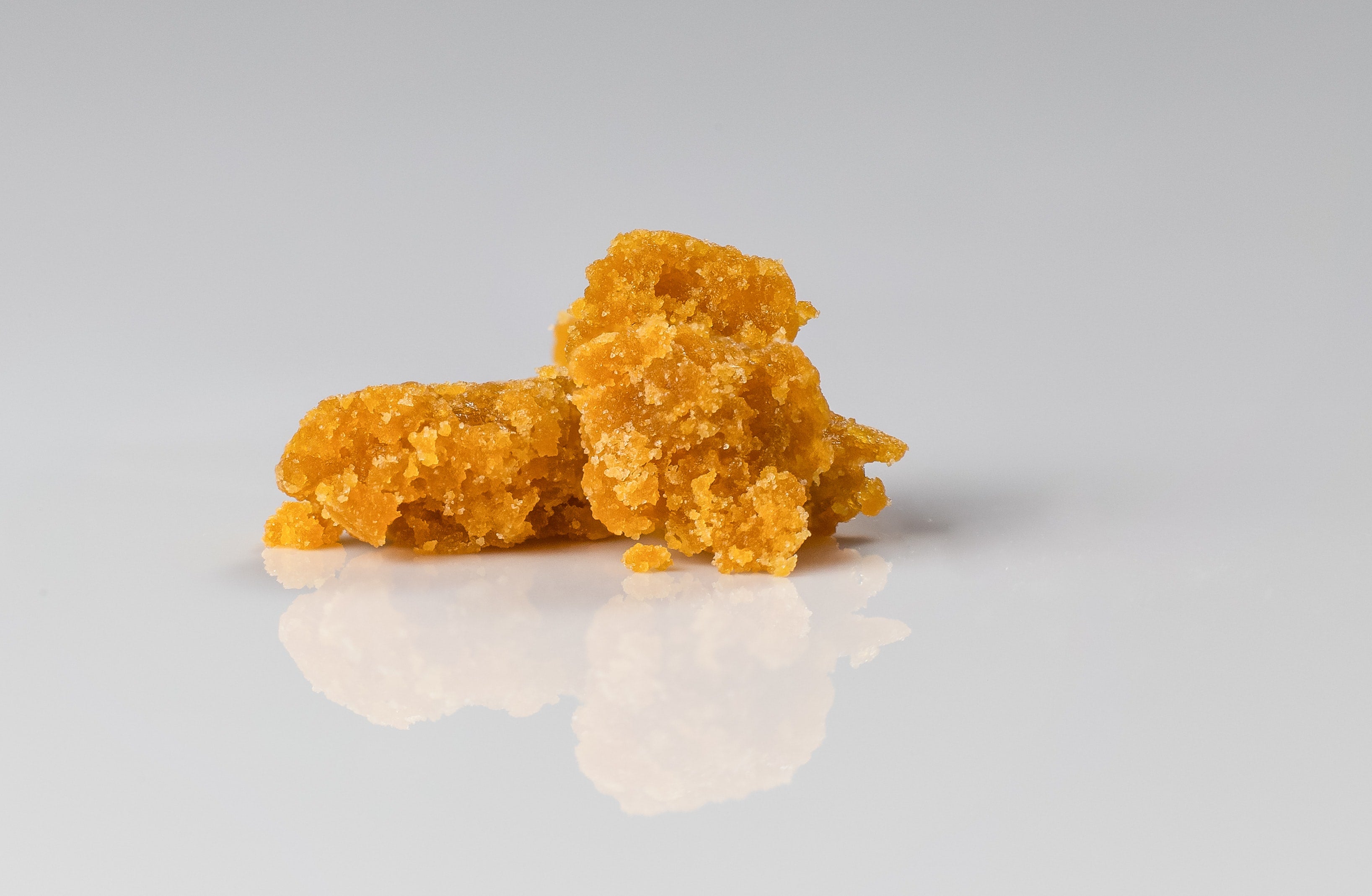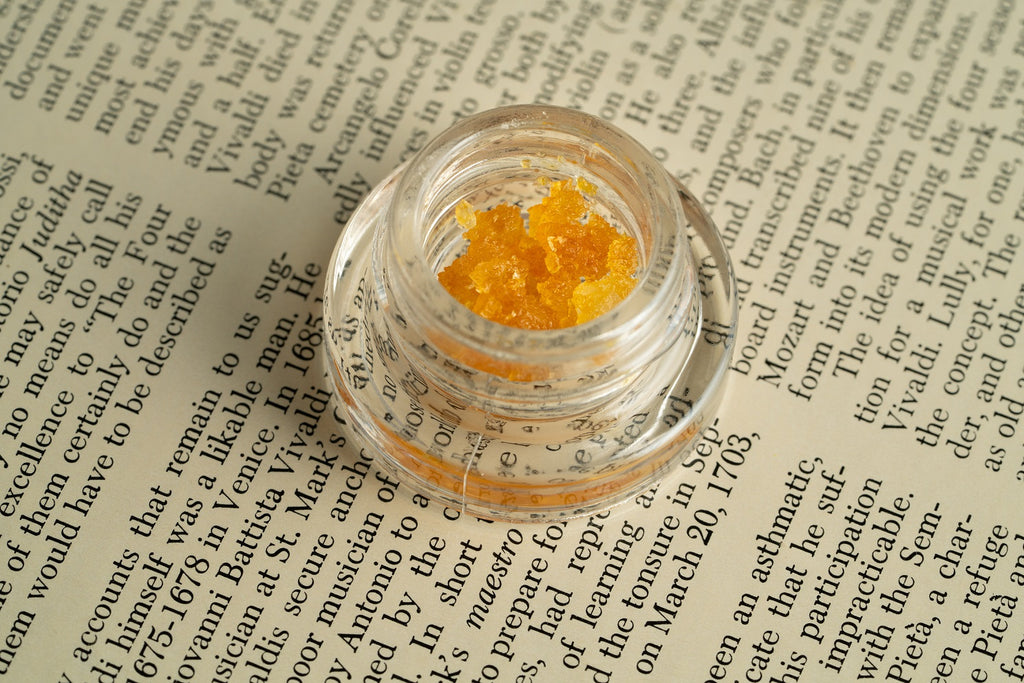Cannabis Rosin

As cannabis becomes more acceptable under the law, there will be a greater need for innovative goods of the highest possible standard.
What Is Cannabis Rosin?
In the manufacturing of rosin, heat and pressure are used to extract cannabinoids and terpenes from the trichome glands of the cannabis plant.
Think of it as squeezing the juice from grapes or oil from olives, with the ultimate product being comparable to butane hash oil (BHO), but without the toxic ingredients.
In the right hands, rosin may be quite strong and full of cannabinoids and terpenoids. Making golden yellow rosin is quick and easy, which is a huge plus.
Rosin manufacturing may be viewed as a simple alternative to closed-loop resin extraction, which is also utilized in creating essential oils.
Closed-loop extraction is time-consuming, involves technical skills, a lot of costly equipment — pumps, a tank, and a specially built chamber to execute the extraction — and you won't have a workable concentrate until you purge all the leftover solvents using a vacuum oven.
Even after that, there may still be trace levels of the substance remaining in extracts based on solvents.
(WARNING: Attempting any activities that need chemicals at home should be avoided at all costs. These should be left to specialists.)
In contrast, the production of rosin is regarded as a much safer method than that of the majority of other concentrates.
The temperature and pressure employed during extraction affect the colors and consistency of the resulting product, making rosin accessible as shatter or wax.
Hash Rosin's History
Rosin was initially presented to the cannabis community via ICMag in 2006 by forum user Compashon. It may have been produced accidentally long ago, and its origin is unknown. It just became famous in 2015, when Phil "Soilgrown" Salazar began creating and photographing it while trying to utilize some lower-quality hash.
Salazar saw glue leaking out the side of the hash when pressing it to smooth it out, leaving the original hash dry and useless. He grabbed a bit of hash, sandwiched it between parchment paper, and pushed it against a hot dab nail, thinking he'd discovered a new way. The oil, now known as rosin, leaked out.
After experimenting with his wife's hair curler, he started using a hair straightener. She recommended using the flat-iron tool, and when he ran out of hash, he switched to buds. The oil came out in the same manner.
Since then, rosin manufacturing has expanded to include the use of screens and industrial presses to mass-produce more uniform products.

Photo by Alex Person
Hash Rosin Hits the Market
2006 was the year when rosin was first introduced into the market for use in commercial applications. Hash rosin prepared at home was quite popular among those who used marijuana for many years.
Even while it may be easier to outsource the manufacture of rosin, manufacturing it at home is still a task that requires a significant amount of time.
As a consequence of these technological advancements, the process of making rosin has gotten noticeably more complicated, and since 2015, the demand for numerous forms of rosin, in addition to the hash, has seen a meteoric rise in popularity.
Many people prefer the cleaner, more natural rosin preparation since it does not employ solvents, which have usually included butane, propane, or other petrochemicals.
The finished rosin is solvent-free and ready to use without the need for thorough purging.
Rosin manufacture is also a straightforward mechanical process, making it more accessible to the general public. Even a high-powered, costly rosin press is less sophisticated than a closed-loop extraction system required to ensure the safety of solvent-based manufacturing.
Because the chemicals employed in that form of extraction are exceedingly volatile, it is dangerous for non-professionals and illegal in most countries.
Rosin manufacture is lawful in all states where cannabis is legal. It may be created safely at home with little expense, enabling home growers to make the most of their trim, which is generally discarded.
Rosin presses make it possible for commercial extraction labs to produce extremely high yields of a greater variety of chemicals than ever before. It is the equivalent of holding a hair straightener in your hands.
Two hot metal surfaces are pressed together by a worker in this process. When the plates are brought into close proximity to one another, a golden sludge begins to seep out of the space in between them. It's sort of like when you squeeze an orange to get the juice out!
Rosin extracted from cannabis has a THC concentration that ranges from 60 to 90 percent, with the average being around 80 percent.

Photo by B. Crawford
This stands in stark contrast to the average cannabis flower, which has a maximum THC content of somewhere about 30 percent.
The number of cannabis concentrates that are accessible is expected to increase in tandem with the progression of marijuana decriminalization and the expansion of the cannabis industry.
Consumers are educated, and as a result, they will only purchase products that can unquestionably be said to be risk-free and non-carcinogenic.
Let's have a look at the reasons why different concentrations have different characteristics.
What Sets Hash Rosin Apart
Although it's standard practice to do so, marijuana rosin and butane hash oil (BHO) is not the same thing, and their extraction processes couldn't be more different. Butane is the preferred solvent for cannabis extractors that wish to produce butane hash oil (BHO) from the plant.
Through the use of this technique, cannabinoids and terpenes are isolated from the plant detritus. After that, a butane extractor is used on the BHO in order to remove the butane.
In contrast to products that are based on solvents, the production of rosin does not involve the use of any chemicals.
People who often use cannabis and are worried about their health may find this to be rather intriguing. When compared to the construction of solventless rosin machines, which can manufacture high-yield products in a matter of minutes or even seconds, the production of solvent-based concentrates may take up to an entire day.
The production of solventless hash is more akin to that of boutique craft breweries than it is to that of large-scale BHO manufacturers.
Cannabis rosin extracted without the use of solvents often results in a higher quality end product, despite the fact that its production is more labor-intensive. Only high-quality raw materials may be used in the production of rosin.
What About Hash Rosin?
Some of the highest quality cannabis rosins may be produced using a rosin press and pressing bubble hash.
It is possible to dab on cannabis rosin that was extracted from bubble hash made from marijuana. Nonetheless, this is not the only way to consume rosin made from cannabis. On the other hand, hash rosin is a very malleable concentration.
Combining it with flowers, for instance, might provide the experience a little more of a kick when smoked out of a joint or bowl.
You may also use a concentration vape pen and put a glob of wax in the chamber of the device.


